Ordinary Differential Equations | Mathematics - Exercise 10.9: Choose the correct answer | 12th Maths : UNIT 10 : Ordinary Differential Equations
Chapter: 12th Maths : UNIT 10 : Ordinary Differential Equations
Exercise 10.9: Choose the correct answer
EXERCISE 10.9
Choose the correct or the most suitable answer from the given four alternatives :
1. The order and degree of the differential equation  are respectively
are respectively
(1) 2, 3
(2) 3, 3
(3) 2, 6
(4) 2, 4
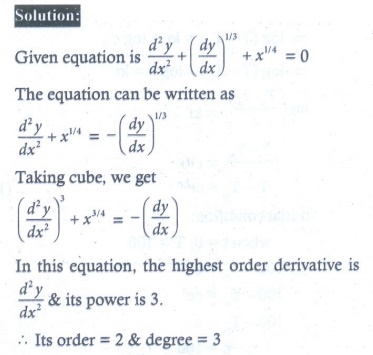
2. The differential equation representing the family of curves y = A cos(x + B), where A and B are parameters, is
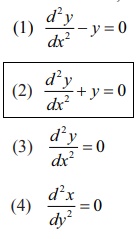
Answers: (2)
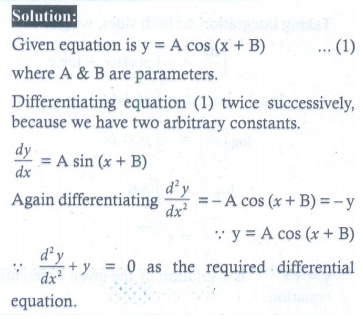
3. The order and degree of the differential equation √sin x ( dx + dy ) = √cos x ( dx − dy) is
(1) 1, 2
(2) 2, 2
(3) 1, 1
(4) 2, 1
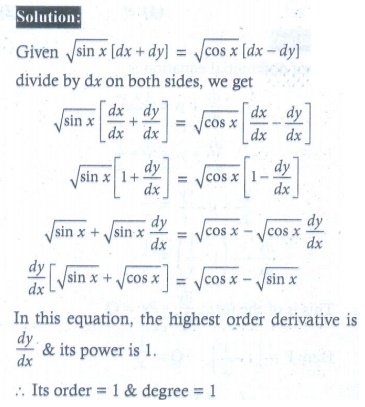
4. The order of the differential equation of all circles with centre at ( h, k ) and radius ‘a’ is
(1) 2
(2) 3
(3) 4
(4) 1

5. The differential equation of the family of curves y = Aex + Be−x , where A and B are arbitrary constants is
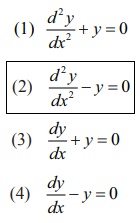
Answer: (2)

6. The general solution of the differential equation  is
is
(1) xy = k
(2) y = k log x
(3) y = kx
(4) log y = kx
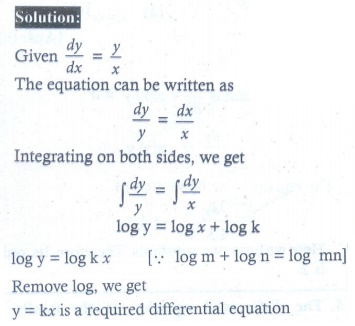
7. The solution of the differential equation 2x dy/dx − y = 3 represents
(1) straight lines
(2) circles
(3) parabola
(4) ellipse
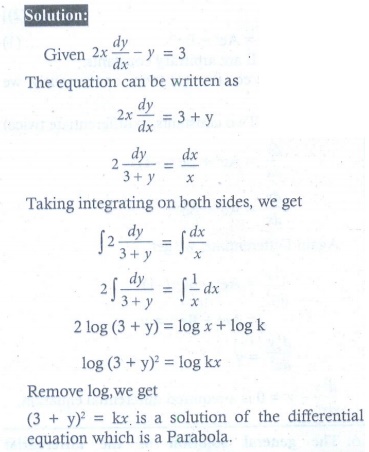
8. The solution of dy/dx + p ( x) y = 0 is
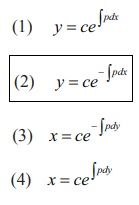
Answer: (2)
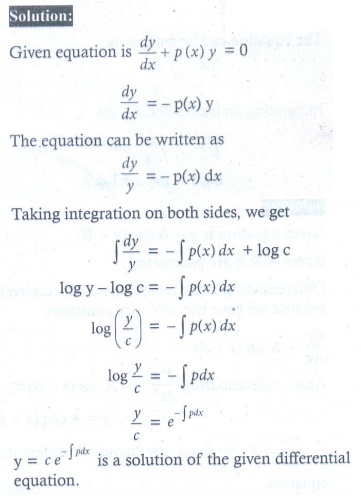
9. The integrating factor of the differential equation  is
is
(1) x/eλ
(2) eλ/x
(3) λex
(4) ex
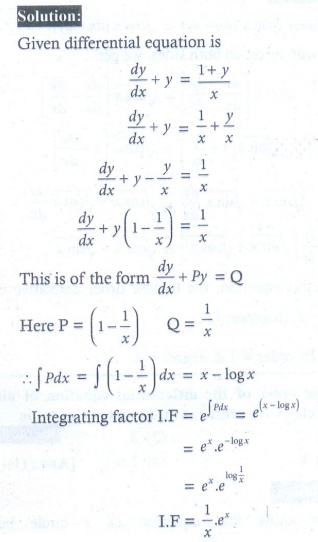
10. The integrating factor of the differential equation dy/ dx + P ( x) y = Q(x) is x, then P(x)
(1) x
(2) x2/2
(3) 1/x
(4) 1/x2
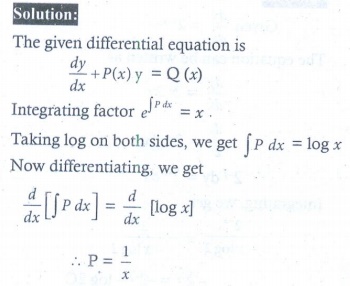
11. The degree of the differential equation  is
is
(1) 2
(2) 3
(3) 1
(3) 4
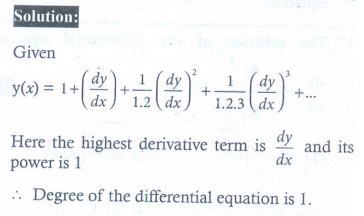
12. If p and q are the order and degree of the differential equation  when
when
(1) p < q
(2) p = q
(3) p > q
(4) p exists and q does not exist
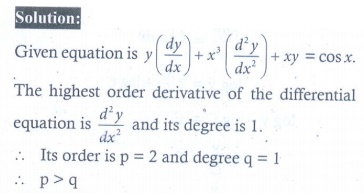
13. The solution of the differential equation  is
is
(1) y + sin−1 x = c
(2) x + sin−1 y = 0
(3) y2 + 2 sin−1 x = C
(4) x2 + 2 sin−1 y = 0
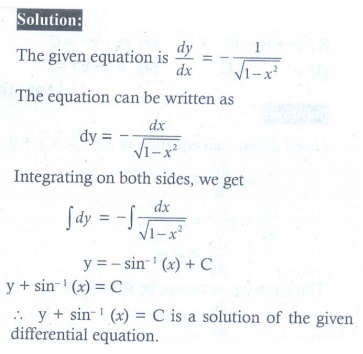
14. The solution of the differential equation dy/dx = 2xy is
(1) y = Cex2
(2) y = 2x2 + C
(3) y = Ce −x2 + C
(4) y = x2 + C
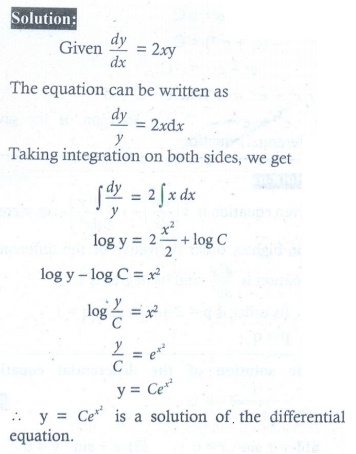
15. The general solution of the differential equation  = x + y is
= x + y is
(1) ex + ey = C
(2) ex + e−y = C
(3) e−x + ey = C
(4) e−x + e−y = C

16. The solution of  is
is
(1) 2x + 2y = C
(2) 2x − 2y = C −
(3) 1/2x – 1/2y = C
(4) x + y = C
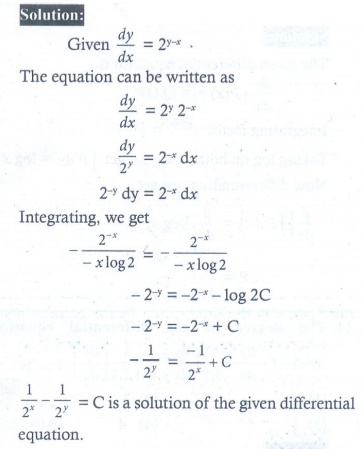
17. The solution of the differential equation  is
is
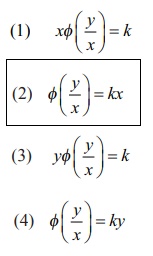
Answer: (2)
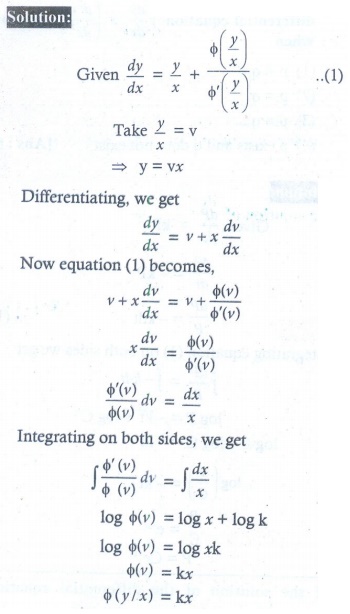
18. If sin x is the integrating factor of the linear differential equation dy/dx+ Py = Q , then P is
(1) log sin x
(2) cos x
(3) tan x
(4) cot x
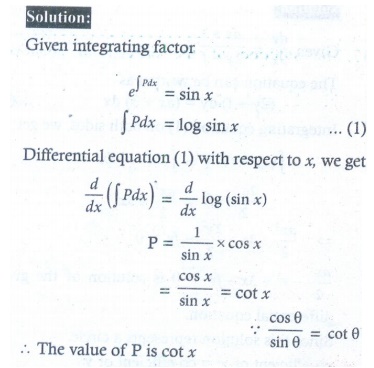
19. The number of arbitrary constants in the general solutions of order n and n +1are respectively
(1) n −1, n
(2) n, n +1
(3) n + 1, n + 2
(4) n +1, n
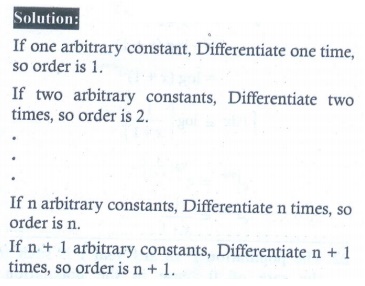
20. The number of arbitrary constants in the particular solution of a differential equation of third order is
(1) 3
(2) 2
(3) 1
(4) 0
21. Integrating factor of the differential equation  is
is
(1) 1 / x +1
(2) x +1
(3) 1 / √(x +1)
(4) √(x +1)
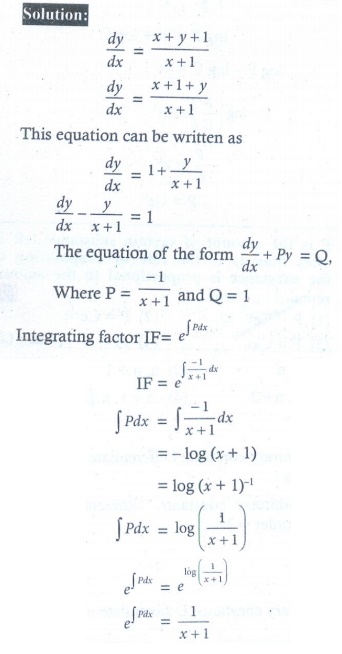
22.The population P in any year t is such that the rate of increase in the population is proportional to the population. Then
(1) P = Cekt
(2) P = Ce−kt
(3) P = Ckt
(4) P = C
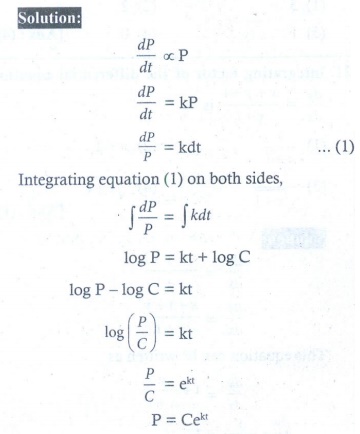
23. P is the amount of certain substance left in after time t. If the rate of evaporation of the substance is proportional to the amount remaining, then
(1) P = Cekt
(2) P = Ce−kt
(3) P = Ckt
(4) Pt = C
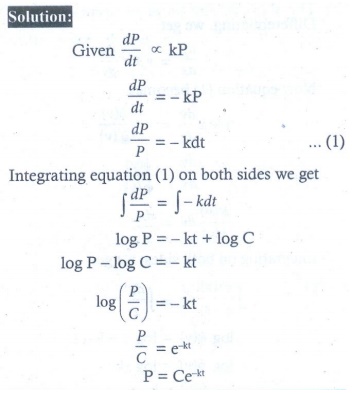
24. If the solution of the differential equation  represents a circle, then the value of a is
represents a circle, then the value of a is
(1) 2
(2) −2
(3) 1
(4) −1
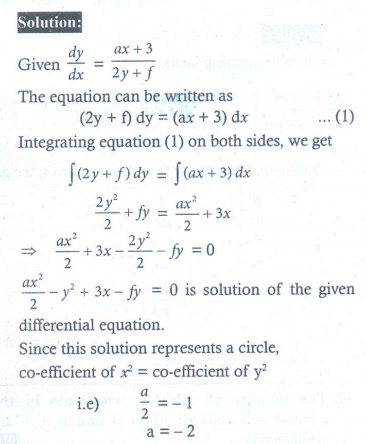
25. The slope at any point of a curve y = f (x) is given by dy/dx = 3x2 and it passes through (-1,1). Then the equation of the curve is
(1) y = x3 + 2
(2) y = 3x2 + 4
(3) y = 3x3 + 4
(4) y = x3 + 5
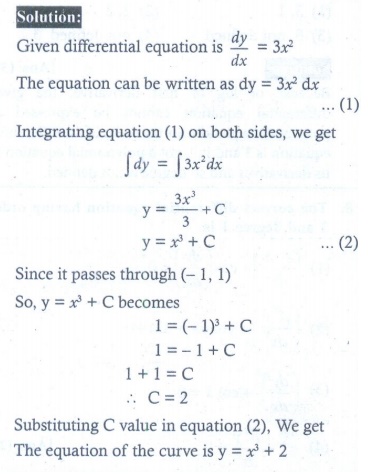

Related Topics